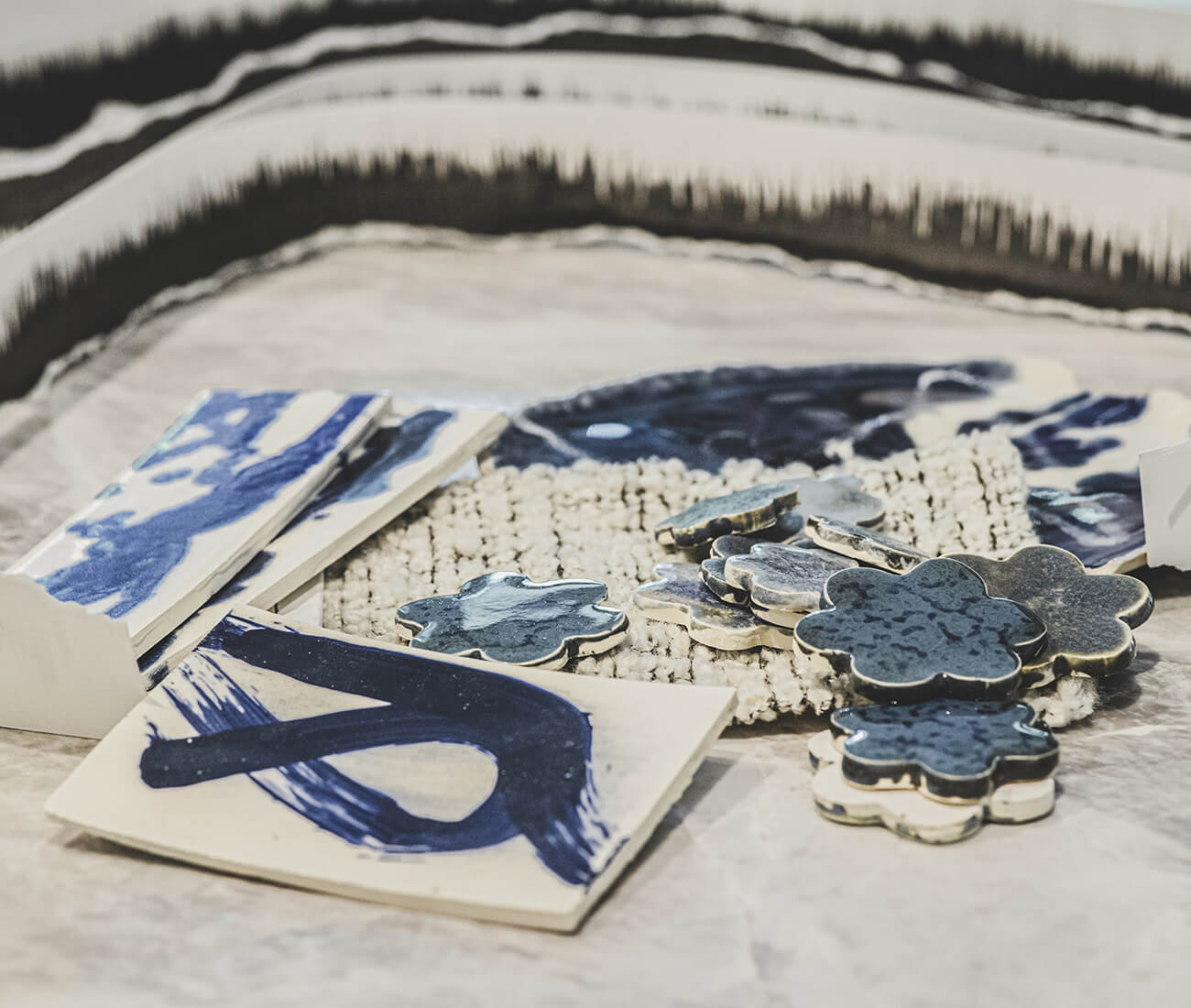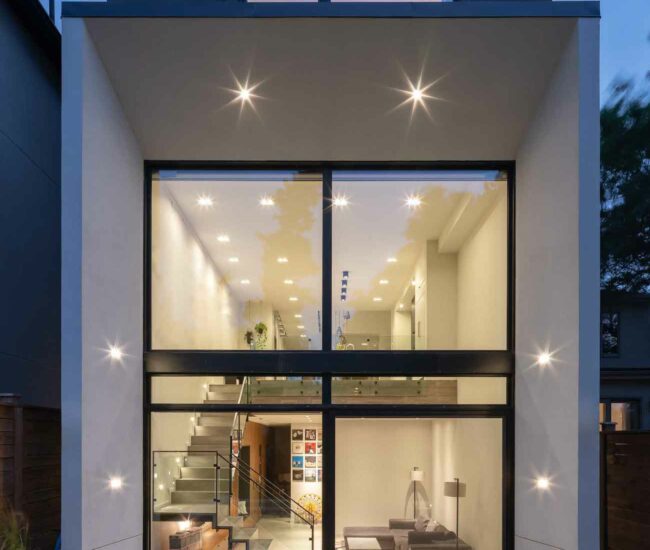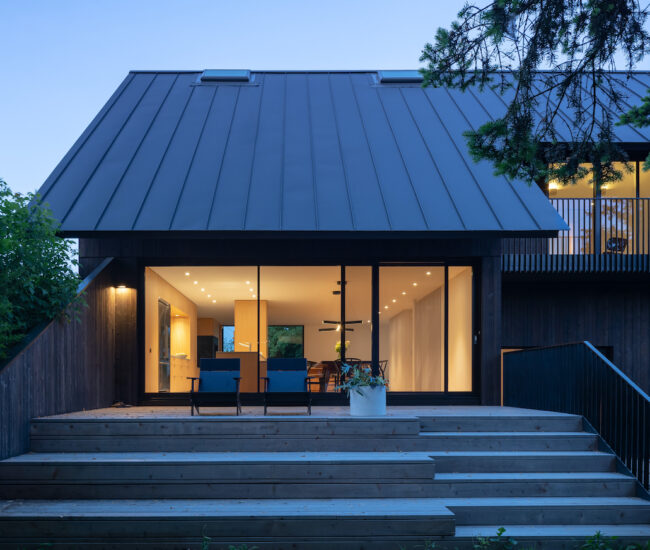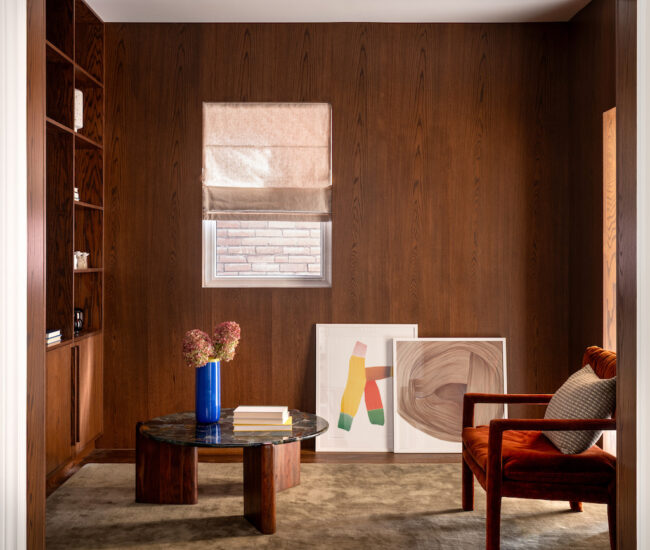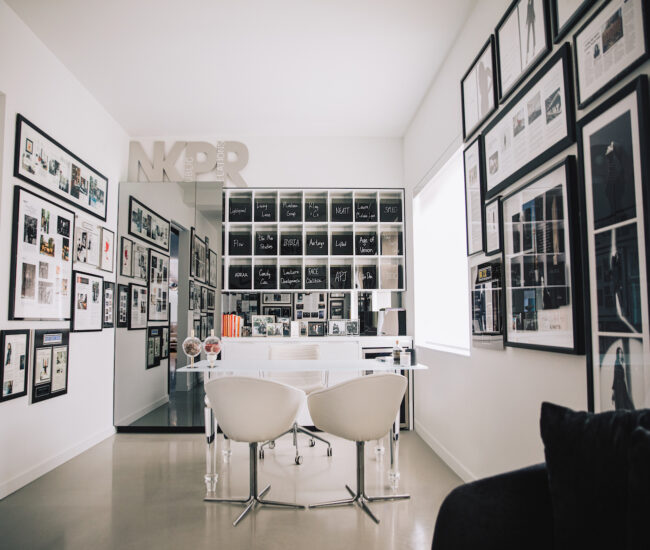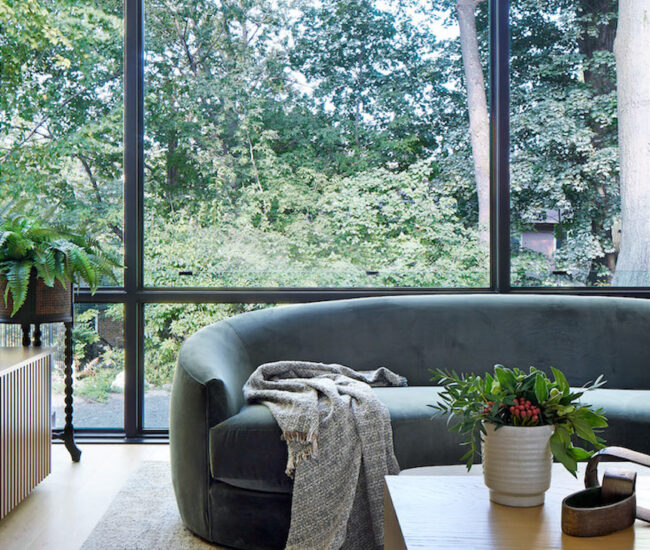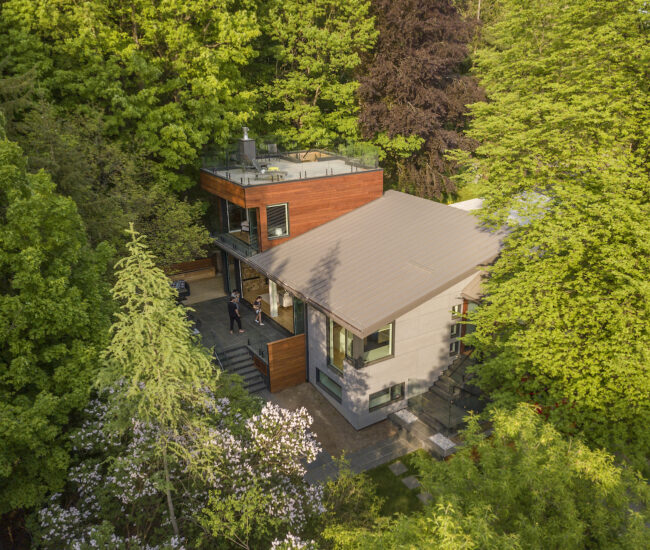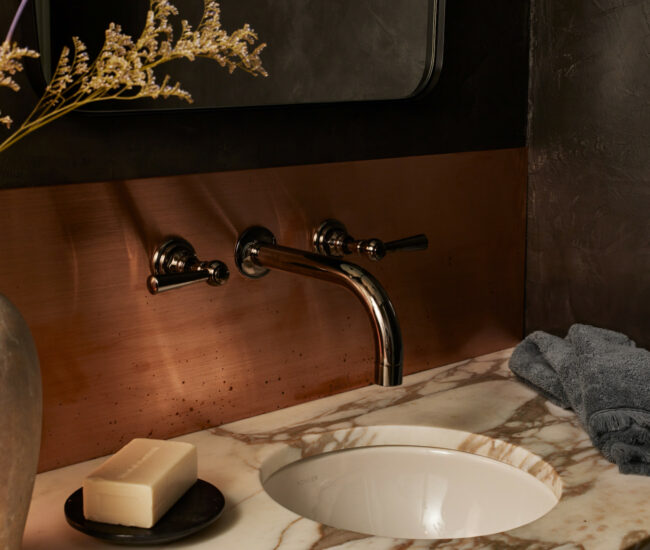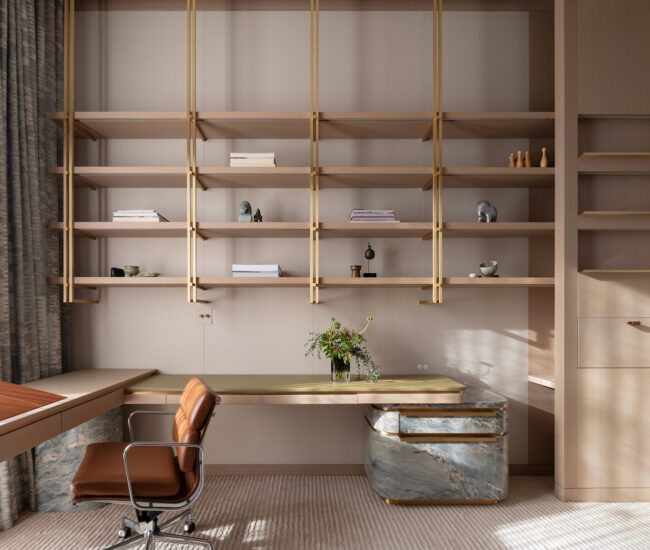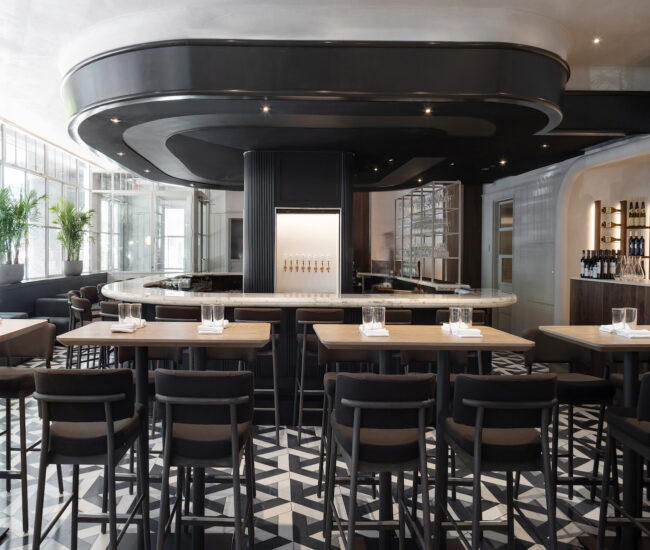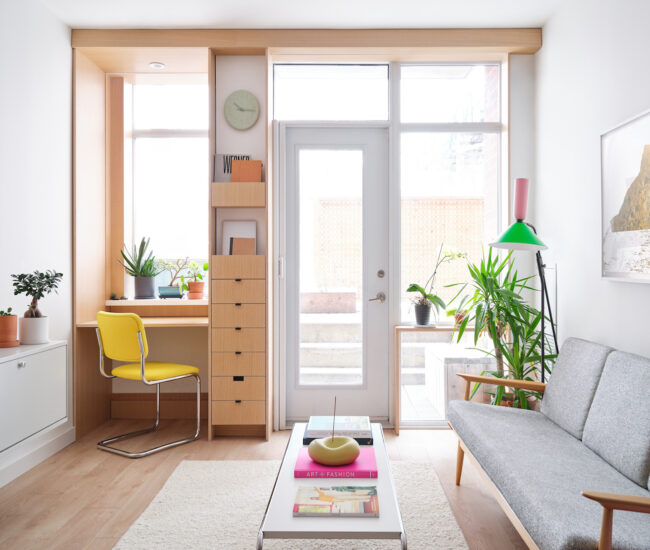Show Us Where You Live: Deborah Moss’ Seaton Village Sanctuary
Like Moss & Lam’s art and installations, Deborah Moss’ home marries the welcome imperfections of the handmade with sheer luxury
Deborah Moss is used to a little bustle. As the head of Moss & Lam, which she founded with her late husband Edward Lam in 1988 (and who we profiled way back in 2013), her day-to-day is typically spent directing the efforts of more than 20 designers and artisans as they paint, fashion and construct new canvases and installations for the studio’s posh clients, which in recent years has included the Fairmont Royal York, Raffles Hotel Singapore and Viceroy Palm Jumeirah in Dubai. Moss’s list of collaborators is likewise exclusive, and counts industry heavyweights like Yabu Pushelberg (whose home you can also check out), the Rockwell Group and AEDAS. Her work has earned her no shortage of accolades over the years, including an AZ Award for M&L’s W1 table.
Those projects and collaborations haven’t stopped – she’s currently working on projects for clients in Europe and Asia, as well as ceiling art for Ink Entertainment’s newest restaurant, Amal, here in Toronto – but Moss, like most of us, is working from home, which isn’t quite as lively as a working studio. She’s made her peace with the quiet, though, and embraced the perks of working from home (impromptu mother-daughter trips to the Beaches didn’t happen before the lockdown). And for our benefit, she also took the time to show us around her home.

Designlines: Can you tell our readers who you are, and let them know about some of your favourite projects?
Deborah Moss: My paper edge spirals are in each guest room of the Four Seasons Toronto, and we painted the impressionist tree canopy above the reception desk. For New York’s W Times Square, we sculpted a giant 3D wave in plaster directly on the staircase wall that’s over 50 feet high and 100 feet long. Then there’s my furniture, including The W1 line, which is carried at Avenue Road, and a line of hand-painted wall coverings called Canvas, which is available through Primavera Furnishings in Designers Walk.

Designlines: Who lives with you?
Deborah Moss: I usually live on my own with my standard poodle, Thomas, but my daughter Poppy came home from her third-year exchange program in Amsterdam to ride out the pandemic. My other daughter, Charlotte, attends the Sorbonne and elected to stay in Paris during the lockdown.

Designlines: What part of town is your home located in and how long have you lived there?
Deborah Moss: I live in Seaton Village, just west of the Annex. It has such a quiet and friendly feel despite being so central. I moved here almost two years ago after downsizing from our family home in the West End. When the kids were little we lived right in the heart of the Annex, so it felt like coming home.

Designlines: What made you first fall in love with your home?
Deborah Moss: I want to learn more about my house’s history, but I’d say the exterior has some Craftsman qualities and is likely over 80 years old. I’ve seen similar homes scattered throughout Seaton Village and The Annex.
Frankly, the style is quite unlike me. Our previous two homes had clean, contemporary detailing, but when I decided to move I found I was open to new ways of living. The interior has an open plan ground floor with an odd mash up of archways, original stained glass and deep baseboards. Outside, there was the beginning of a well-structured garden with a decent sized courtyard in the back.
When purchasing, I convinced myself the house was move-in ready. Who was I kidding? I ended up making a lot of cosmetic adjustments to lighten up the colours. The contractors had to wade through another builder’s questionable handiwork, but they were tremendous and now my house is solid and completely up to code. It’s an older home and there are constant surprises, but it’s a perfect respite in this time of isolation.

Designlines: What are some of your favourite aspects of the home?
Deborah Moss: When some friends first came to see the house they asked me when I was going to get rid of the arches on the ground floor, but I love how irregular and imperfect they are – you can tell they were crafted by hand. My front porch adds the feeling of another room that I can use almost year-round, and even in the winter it feels magical to sit outside wrapped in blankets with friends. Having handmade items from Moss & Lam also contributes to the sense of home as well. It’s a luxury to live with something you’ve guided through the stages from idea to sketch to sample to production.

Designlines: How did your your home serve you during the pandemic?
Deborah Moss: I’ve set up shop on my dining table, which isn’t ideal for me but it works. I’m close to the coffee machine and I’ve been able to watch the seasons change and enjoy all the greenery outside. It’s pretty tempting to get out in the garden and muck about.

Designlines: Moving forward, with home-time now more important than ever, are there further changes you would like to make to your living environment?
Deborah Moss: I’m privileged to be able to work remotely and draw at my dining table, but my next goal is to start painting, so setting up a basement studio will be my next project. It will enable me to dive deeper into material and research development from home.

Designlines: Creativity and business wise, what strides were you able to make during the enforced time off?
Deborah Moss: I’m used to our office/studio environment and getting quick answers, but I’ve come to accept that sometimes people’s Wi-Fi drops out, that dogs bark during team meetings and that people just don’t get back to you as quickly as they used to. It is what it is; there are bigger matters out there.
Personally, I love to cook, and having my daughter home gave me the opportunity to try some new things. I’ve perfected a pizza dough and made David Chang’s bo ssäm, which will definitely be on rotation this summer. Poppy and I are also working on our margaritas and Aperol spritzes.
At the beginning of the lockdown, I had so many plans, but I was naive. I didn’t realize how much work it would be to stay connected. But I’ve managed to read three books! I used to be a big reader and intend to become one again. I have a big list – hopefully I can get to it on my porch on a beautiful day.



